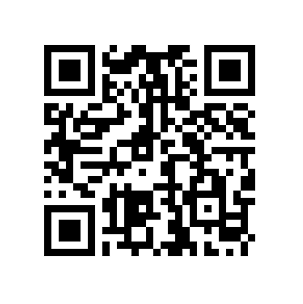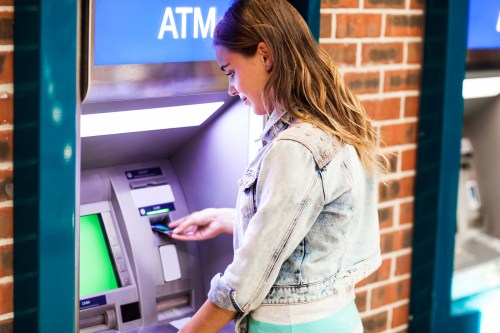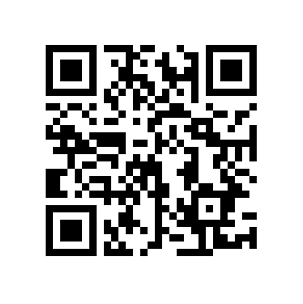As parents, we teach our kids a lot of life skills: how to ride a bike, how to share with others, how to care for a pet. We want our kids to grow up to be well-rounded people (who no longer need their training wheels). Another important life skill is money management.
We get it: You’re dedicated to teaching your kids about money, and one of the first steps toward their financial literacy is to help them understand how banking in Canada works. But how can you pass on that knowledge when some of the terms and descriptions take you back to the days of zoning out in class?
We’ve got you. Read on for all the information you need to help teens and tweens understand what a bank is and how much banking in Canada costs—because we use banking services pretty much every day.
In this guide, we give you the information you need to help teach your kids about banking, different financial institutions, and the services they offer.
What is a bank? And why are banks important?
How exactly does banking in Canada work? You can think of the major banks in Canada like a big pot where we put our money. Some of us leave our funds in the pot until a later date.
Others need access to the money immediately, for things like financing a car, buying a house, going to university, or starting a business. Those people can borrow money from the pot and then pay it back with a little extra—this extra is called interest and is sort of like a fee for borrowing the money. Interest, along with other fees that customers pay, is how the big banks in Canada make money. Some of the money also goes back to those who have added to the pot as a way to encourage them to keep putting their money in—this is called earning interest.
Banks also help us move money from one person to another, something we do every day. Remember that big pot? Well, it’s actually divided into millions of little pots for all the different people and companies that use the bank. It’s also connected (imagine tubes) with all the other banks or pots. When you buy new kicks at the mall with your debit card, for example, the money gets transferred from your bank account to the store’s bank account. Sometimes it just needs to go from one small pot to another at one specific bank, and other times it moves to a different pot at another bank. The same thing happens when your paycheque is automatically deposited into your account or when you pay your phone bill through online banking.
The world’s first banks were set up thousands of years ago to help people exchange goods or store assets for safekeeping, and they still help our economy function today.
Learn more about what is a bank and why they exist.
Types of financial institutions in Canada
Of course, banks aren’t really pots—they are companies with head offices, employees, and thousands of locations across Canada. Really, you can’t go too far in any major city in Canada without running into a bank or other financial institution. Here’s a snapshot of the different kinds of banks and financial institutions in Canada.
Banks
Banks are companies that take deposits—that is, money—from people and make loans. You’ve likely heard of some of the biggest (TD, Scotiabank, RBC, CIBC, and BMO). These banks have branches across the country that you can visit to put money into your pot, or account. This is called making a deposit.
If you need some cash, you can take money out with the help of a teller. Those are the friendly people who work behind the counter at a bank—they’re sort of like cashiers at a store.
In the past, people had to go into the bank often. These days, most of us are more likely to use a bank branch’s ATMs—an automated teller machine where you can put in your bank card and deposit or take out money—or do our banking from home using the bank’s website or app to pay bills and complete other transactions. (Our great-grandparents would marvel at being able to bank in your PJs, wouldn’t they?) But bank branches are still relevant and useful. For one thing, you can go in and ask the staff any questions you may have about banking.
Digital banks
Digital banks are similar to traditional banks, but they don’t have physical buildings or branches you can visit—they operate online. These banks typically have lower service fees than bricks-and-mortar banks. Some people prefer them, while others might find it inconvenient that they can’t talk to a teller or bank manager in person.
Credit unions
Credit unions offer many of the same services as the big banks in Canada: You can deposit money, get loans, and hold investment accounts at them. The difference is that a credit union is owned by the people who have accounts there, who are known as members. And any decisions the credit union managers make must benefit all the members—kind of like a collective. On the other hand, the major banks in Canada are owned by outside investors, known as shareholders.
Trust companies
Trust companies are different from banks and credit unions. You can hire them to manage assets—like money or investments—for the benefit of another person (like a minor, for example). They also oversee the transfer of money to the beneficiaries of a trust when it’s time. Trust companies are often, but not always, divisions of major banks in Canada, and they can also offer wealth and asset management services and handle estate settlement.
Mortgage companies
Mortgage companies also don’t take deposits from customers. Instead, they loan money specifically for buying property. Their services may be used by people who don’t qualify for these loans through traditional banks or who wish to shop around for the best mortgage to suit them. And if you’re wondering what a mortgage is, we’ve got you. You’ll learn more about that below.
Insurance companies
Insurance companies are kind of like umbrellas—their products can offer protection if things in life get stormy. They sell policies that provide financial coverage in case something happens to your car, house, or health. The same way you pay a store when you buy an umbrella, you have to pay an insurance company to purchase coverage. This is called a premium. The insurance company pools your premiums together with other people’s premiums, and then when something happens to you or your property and it’s covered under your policy, the insurance company pays you a predetermined benefit out of that pool of money.
Read more about how to teach kids about insurance.
Investment companies
An investment company pools your money with other people’s and then uses it to invest in things that will make a profit. The company could buy stocks (small amounts of a company) or bonds (where a company or government borrows money, pays a set amount of interest over the borrowing period, and then pays the money back at the end). Any money the company makes or loses is shared among the investors.
Read more about the stock market explained for kids.

What types of services do banks offer?
Pretty much all of us will deal with a major bank in Canada at some point in our lives. That’s because the services they offer are instrumental to buying the things we need (and want!), saving money, owning homes, and travelling. These are the most common services banks offer:
Chequing accounts
Chequing accounts are designed for everyday activity. For example, when you get a paycheque, it will often be deposited into one so you can easily access your money to pay bills and withdraw cash.
They’re called chequing accounts because in the past, most people wrote cheques—pieces of paper that you fill out with the name of the person you’re paying, the date, and the amount you want to pay them—to make payments from this type of account.
While you can still get a chequebook for the odd occasion when you might need one (think: the cheque Aunt Bea mails with your birthday card), these days money is usually handled digitally and through your debit card. Debit cards are physical cards used to make daily financial transactions, like paying for a hoodie at that hip new boutique.
Chequing accounts don’t pay much interest—that is, the bank doesn’t give you a lot of money for putting your funds in this particular part of the pot. If you have money saved up that you don’t need right away, you might consider moving it into an account that pays more interest, like a savings or investment account.
Savings accounts
Savings accounts are often considered a longer-term place to put your money, and they usually offer higher interest rates than chequing accounts. They’re a great place to park your funds if you’re saving up for, say, a trip, a video-game console, or a new laptop.
It’s usually pretty easy to access the money in your savings account—you can either go to a bank branch or ATM or use online banking.
Read more about savings tips for kids.
Investment accounts
If you don’t need access to your money immediately or have a short-term savings goal, you can put it into a longer-term account, called an investment. This can be set up at a bank branch, too. Here are some examples of investment accounts offered at major banks in Canada:
- Guaranteed Investment Certificates (GICs): Investing often involves a bit of risk—if the companies or funds you invest in lose money, so do you. GICs are a way of investing money with no risk. You’ll never lose any of what you put in (which isn’t always the case with investments). On the downside, your money is locked in for the duration of the GIC, so if you need to access the cash before your term is up, you’ll likely have to pay a penalty.
- Registered Education Savings Plans (RESPs): These are savings accounts used to pay for post-secondary education like university or community college. They’re often set up for a young person by parents, grandparents, or close family friends. Any interest earned on this account is tax-free, and the government will also contribute a certain amount for kids under 18.
- Registered Retirement Savings Plans (RRSPs): These are savings accounts that are usually for use in retirement, and they often provide some tax benefits.
- Tax-Free Savings Accounts (TFSAs): Normally, you pay tax on any interest you earn, but TFSAs allow you to put away a limited amount of money that can earn tax-free interest. But unlike an RRSP, contributions to a TFSA are not deductible at tax time.
Read more about investing for teens.
Loans
You know when you’re short on funds so you borrow money from a friend for a can of pop after school? Financial institutions may also lend you money for a period of time, but (probably) unlike with your pal, you’ll have to pay it back with interest. You need to be eligible for a loan, meaning the bank will want to make sure you meet certain criteria and will have the money to pay back the loan within a certain amount of time.
There are a few different kinds of loans. A personal loan is a general loan for a specified amount of money with specific requirements for paying it back. And a line of credit is when you have access to a certain amount of money but only pay interest on what you actually borrow.
Sometimes loans are for a defined purpose, like school tuition, buying a car, or renovating a home. These loans may have different interest rates and payback terms, so you’ll want to take a close look at what you’re applying for and understand how the loan works before you sign up.
Read more about the different types of debt.
Mortgages
A mortgage is a type of loan used to buy a home or another type of property, like a cottage. Because these loans are usually large amounts of money, they are secured against your property. This means if you are unable to pay the loan back by making regular payments, the bank can take possession of the property.
Foreign currency exchange
If you live in Canada, it’s likely that the money in your bank accounts is in Canadian dollars. If you want to finally take that trip to Italy, you’ll need to exchange (or convert) your Canadian money into that country’s currency (the euro). Often, the cheapest place to exchange money is a bank branch.
Certified cheques, bank drafts, and money orders
Most of the time, you’ll be able to make payments using cash, your debit card, e-transfer, or a personal cheque. But sometimes—typically for large transactions, like putting a deposit down on a house or buying a car—you’ll need a certified cheque, bank draft, or money order. The difference between these and a personal cheque is that the bank is guaranteeing to the seller that you have that amount of money in your account. You’ll likely need to visit your local bank branch for these services.
Interac e-Transfer
Making payments is easy and often done by transferring money from your account to someone else’s using email or text. This is great for when you have to pay a friend back for covering your burger, for example. These payments go through a company called Interac, which transfers money between banks. You need to have an account at a participating bank or credit union to use Interac e-Transfer.
Credit cards
A credit card is a plastic card that looks very much like a debit card. Using one is a way to buy something and put off actually paying for it until later. That’s because when you use it, the money isn’t taken out of your own account. When you buy something with your credit card, the shop or company gets paid by the bank or credit card company—but now you owe them.
This is fine if you pay off your credit card on a regular basis, but don’t get into the habit of buying things on a credit card if you don’t actually have the money for them. If you let your purchases add up without paying them off, you’ll have to pay interest. And usually the interest rates on credit cards are very high. You can apply for a credit card at your bank. Most credit cards have a credit limit, meaning there is a set amount you can spend on your card.
Digital banking versus in-branch services
We’re in a digital age, and that applies to banks, too. According to a 2020 study by Accenture, 50 per cent of consumers now interact with their bank through mobile apps or websites at least once a week. That’s because digital banking is more convenient than traditional banking—you can do it from the couch or while on the go via an app instead of visiting your local bank branch.
With online and mobile banking, you can see all your accounts and balances in one place. You can transfer money between accounts, transfer money to another person’s account, and apply for new accounts and loans. You can pay your bills online, and some institutions even allow you to cash cheques via their mobile app by taking a picture of the cheque with your phone.
But there are some things—like getting cash—that just can’t happen online and need to be done by going into a bank branch or visiting an ATM. Too bad we have yet to figure out how to get cash to come out of our computers or phones!
You also need to go into a bank branch or to an ATM to deposit cash.
A visit to a bank branch is in order if you need quick access to a certified cheque or bank draft, too. Online-only banks may offer these services but often require a few days to have your requested documents mailed to you.

The cost of banking in Canada
Like anything in life, banking in Canada is rarely free. Most banks have a range of options that allow you to pick the right account for your needs. Here are some fees to consider when choosing the account that’s a fit for you:
Account fees
Some accounts have flat monthly fees for a predetermined set of services—sort of like a monthly phone plan. For example, you might get unlimited debit transactions or 10 e-transfers a month. Other accounts have lower fees and allow you to pay à la carte for these services—this would be like a pay-as-go plan.
ATM fees
Some accounts allow for unlimited withdrawals at your bank’s ATMs, while others charge fees. There are often fees for taking money out of ATMs that do not belong to your bank.
Extra services
You typically have to pay a small fee for money orders, bank drafts, and certified cheques. You also might need to pay for personal cheques.
Interest charges
Any loan account you have through your bank will have interest that you need to pay, usually on a monthly basis.
NSF fees and overdraft protection
Non-sufficient funds (NSF) fees are charged when someone (or a business) tries to take money out of your account—to cash a cheque you’ve written or deduct a monthly mortgage payment, for example—and you don’t have enough money in your account. The fee for a transaction that “bounces” can be upwards of $50.
You can pay for overdraft protection—either monthly or on an as-needed basis—which allows your bank to lend you the money that’s not in your account rather than have a cheque or pre-authorized payment not go through. You’ll then be charged interest on the overdraft amount.
What do you need to open a bank account in Canada?
Anyone can open a bank account in Canada if they have the right identification. You’ll need two pieces of ID, like a Canadian driver’s licence, Canadian birth certificate, Certificate of Canadian Citizenship, Permanent Resident card, Social Insurance Number card, or Certificate of Indian Status. Other types of acceptable identification include a credit card and an employee-identification card.
You can open a bank account online, in person, or over the phone. You’ll have to fill out some identifying information, choose the account you’d like, and provide your social insurance number (SIN) if your account offers interest.
To open a kid’s bank account, you’ll likely have to visit a bank branch in person.
Learn more about how to open a bank account for your kids.
Student and youth banking in Canada
Even very young kids can open a bank account—with a little help from their parents. It’s a hands-on way to help kids learn about money management, create a healthy relationship with finances, and get practical money skills that they can put to use throughout their lives.
Many of the top banks in Canada offer no-monthly fee bank accounts for students and youth. In many cases, you can get your young child a “first” bank account and then help them graduate to a bank account for teens or students as they grow up. These accounts gradually add services, like the ability to write cheques, to reflect your teen’s increasing maturity.
Bank accounts for teens and kids typically have lower interest rates than adult accounts.
How to choose the right bank for your kids
Just like selecting a new laptop, there’s a lot to consider when choosing a financial institution. Start by researching different banks and credit unions in Canada and comparing the accounts they offer and their associated fees. Talk to friends and neighbours to find out if they’re happy with the bank they use, and read online reviews. You can even visit a local bank branch to ask questions about their products and services.
Location is another consideration. Although there’s a good chance you’ll do most of your banking online, having easy access to a bank branch and ATM can make life a lot easier.
Now that you know a little bit more about banking in Canada, you can help your kid navigate the world of money management. One way parents can help is by using the Mydoh app and Smart Cash Card. It gives tweens and teens the independence to earn their own money through tasks and spend it wisely with their own card. Best of all, parents have oversight on every purchase and can guide their kids.
Understanding how money is saved and spent could give them a leg-up as they start collecting an allowance, getting their first summer jobs, and saving for concert tickets, their first car, and post-secondary education. Double high-five for teaching them financial skills that will prepare them for the real world!
Download Mydoh and help build the foundation of financial literacy for your kids and teenagers.
This article offers general information only and is not intended as legal, financial or other professional advice. A professional advisor should be consulted regarding your specific situation. While the information presented is believed to be factual and current, its accuracy is not guaranteed and it should not be regarded as a complete analysis of the subjects discussed. All expressions of opinion reflect the judgment of the author(s) as of the date of publication and are subject to change. No endorsement of any third parties or their advice, opinions, information, products or services is expressly given or implied by Royal Bank of Canada or its affiliates.

























